Reclaiming the rainbow for humanity
In popular culture, the rainbow flag has come to symbolise the LGBT movement, and I’ve heard relatives complaining this interferes with the “real meaning” of the rainbow. Some conservative Christians have called it “cultural appropriation”, while others have tried to “reclaim” it. However, the rainbow has been used for many things over many years and belongs to all humans, not just to Christians.
A school memory
One of my earliest memories from school involves the rainbow. I was at the local state school, and, if I remember correctly, was six at the time. Our class teacher asked why we see rainbows, and as I knew the answer I of course put my hand up.
“Because God had promised never to flood the Earth again!”
I don’t know what the teacher thought of that, but her response was simple: It shows it’s raining somewhere nearby.
I was mortified. I knew my answer was right, but it had been dismissed out of hand. I had given a deep and meaningful spiritual reason, and got in return a mundane reason: The weather.
Another school memory
Fast forward to secondary school. My parents had sent me to an Adventist high school, and we were taught that the Flood was literally the first rain ever seen on earth. The mists mentioned in Genesis 2 had continued for a couple of thousand years, and Noah was showing his faith by building an ark to prepare for rain when no-one even knew what rain was.
Back then, I was a good Young Earth Creationist and believed that the Earth had been created around 6,000 years ago, and that the rainbow after the Flood was literally the first rainbow.
However, this idea of no rain was new to me, and it made a certain amount of sense. I knew that the rainbow was produced by natural processes, including rain, so if there had been rain before the Flood there would be nothing new about the rainbow.
Incidentally, I found this was listed in Answers in Genesis’ “Arguments to Avoid” (yes, even AiG have standards). Their conclusion?
There are some arguments that Christians should avoid because of their absurdity and some we should avoid being dogmatic about because they are not truly supportable from Scripture. The “no-rain” argument is in the latter category, and as such, it is an argument Christians should not use.
Why do I tell these two stories? To show that I grew up with this, and that I do understand both the fundamentalist YEC viewpoint and the natural, scientific viewpoint.
Things of beauty
For me, first and foremost rainbows are things of beauty, and over the years I have seen some spectacular ones. I find it difficult getting good photos of them, though this autumn photo made it into my favourite photos for 2017:
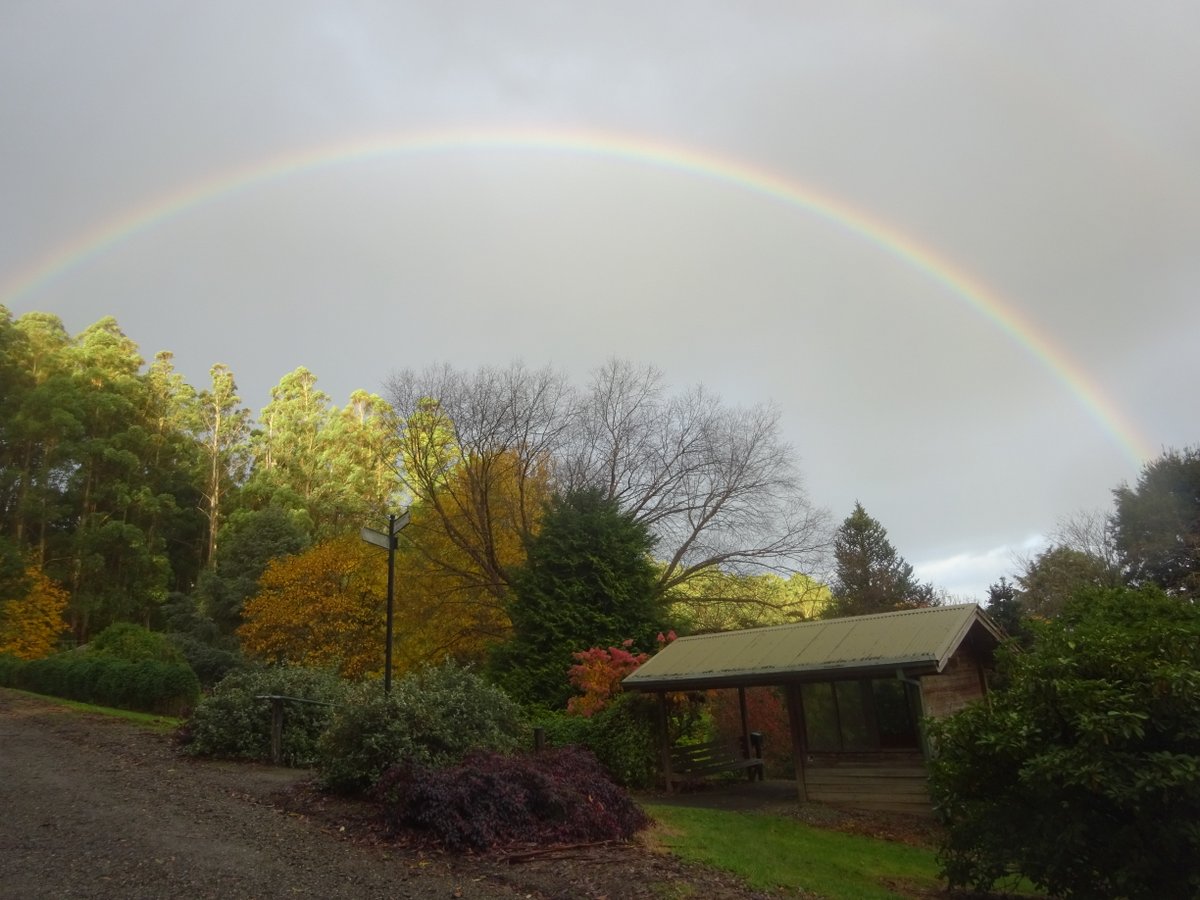
Near the start of the year I saw a rainbow at sunset. Melbourne was still smoke affected, the sky to the east was pink, and the contrast with the rainbow made the colours look quite different from a usual rainbow:
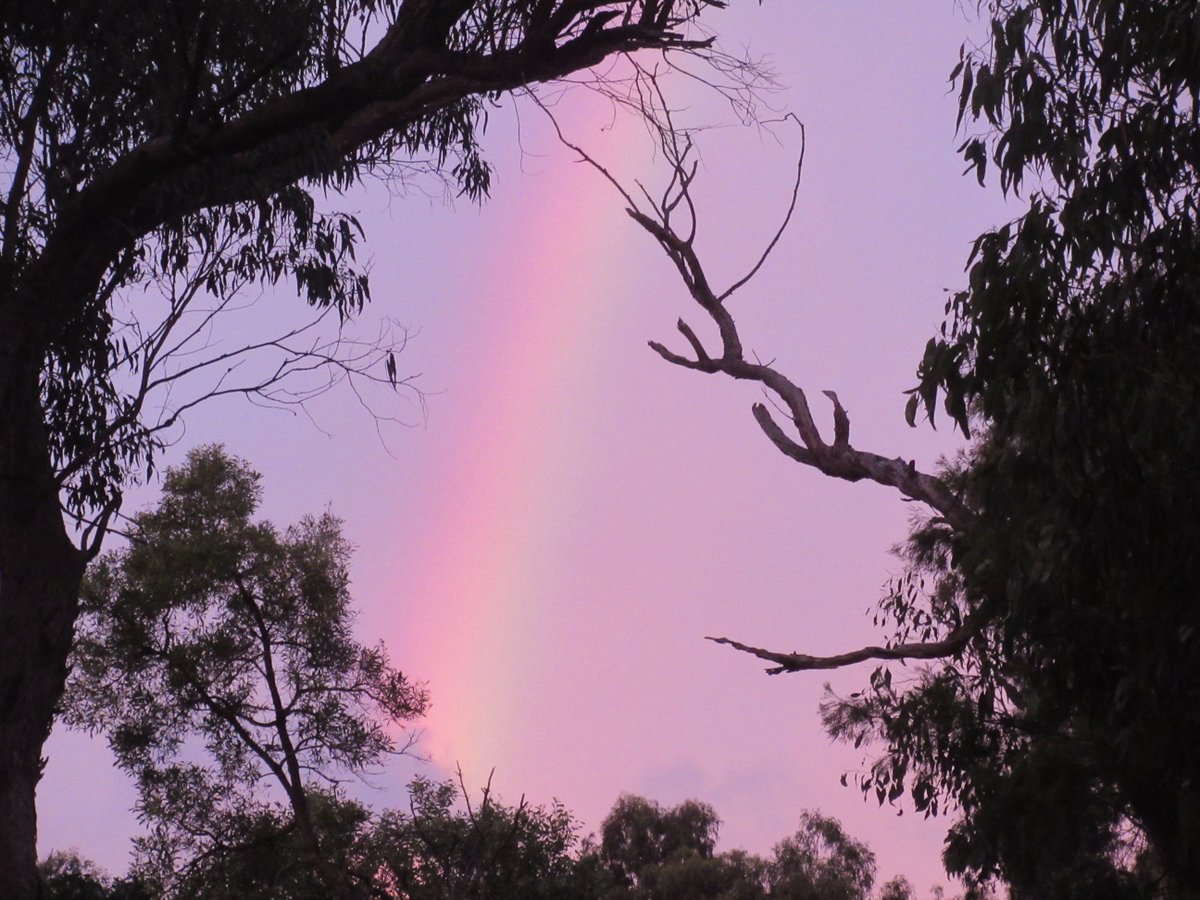
However, it’s not just rain that causes rainbow colours. At the right time, waterfalls can produce a colourful display, with the colours twisting and dancing in a way that mere sky-bound rainbows can’t manage. Take for example this picture of Middle Yosemite Falls:
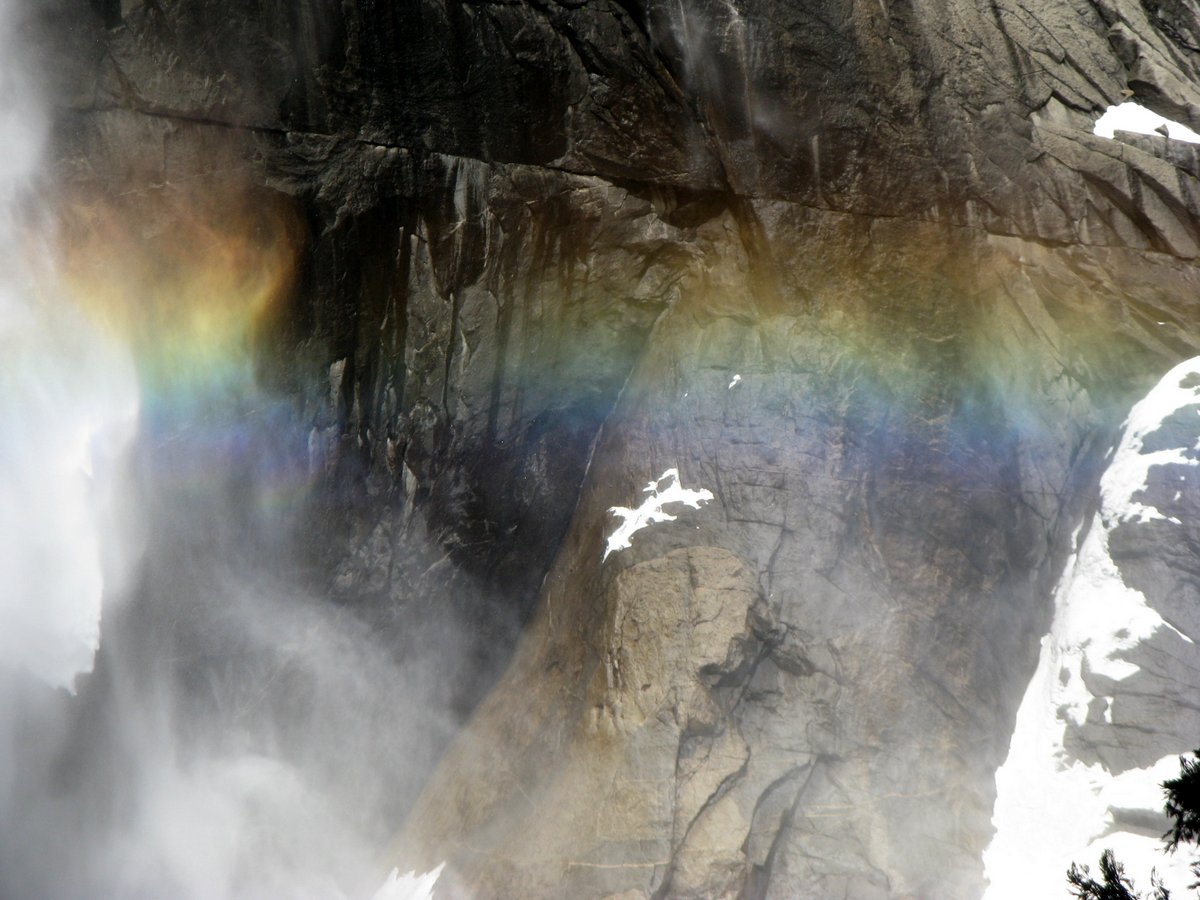
That was ten years ago, when I was in the US for a Bible software conference. I think I was still a confident Young Earth Creationist, but had recognised that the rainbow after the flood couldn’t have been the first rainbow.
My vision now of the Eden that never was definitely has a waterfall, so maybe there were times when the mythical father and mother of humanity sat near the waterfall holding hands and admiring the colours - not realising God would later appropriate them.
Things of science
Today, we know how rainbows form. It’s to do with the properties of light and the refraction of sunlight through water. Like God’s Bridge, they are caused by natural processes, and we no longer have any reason to believe any god is involved.
The rainbow trail
A couple of months ago, I was walking along a bike trail and saw this sign on a fence:
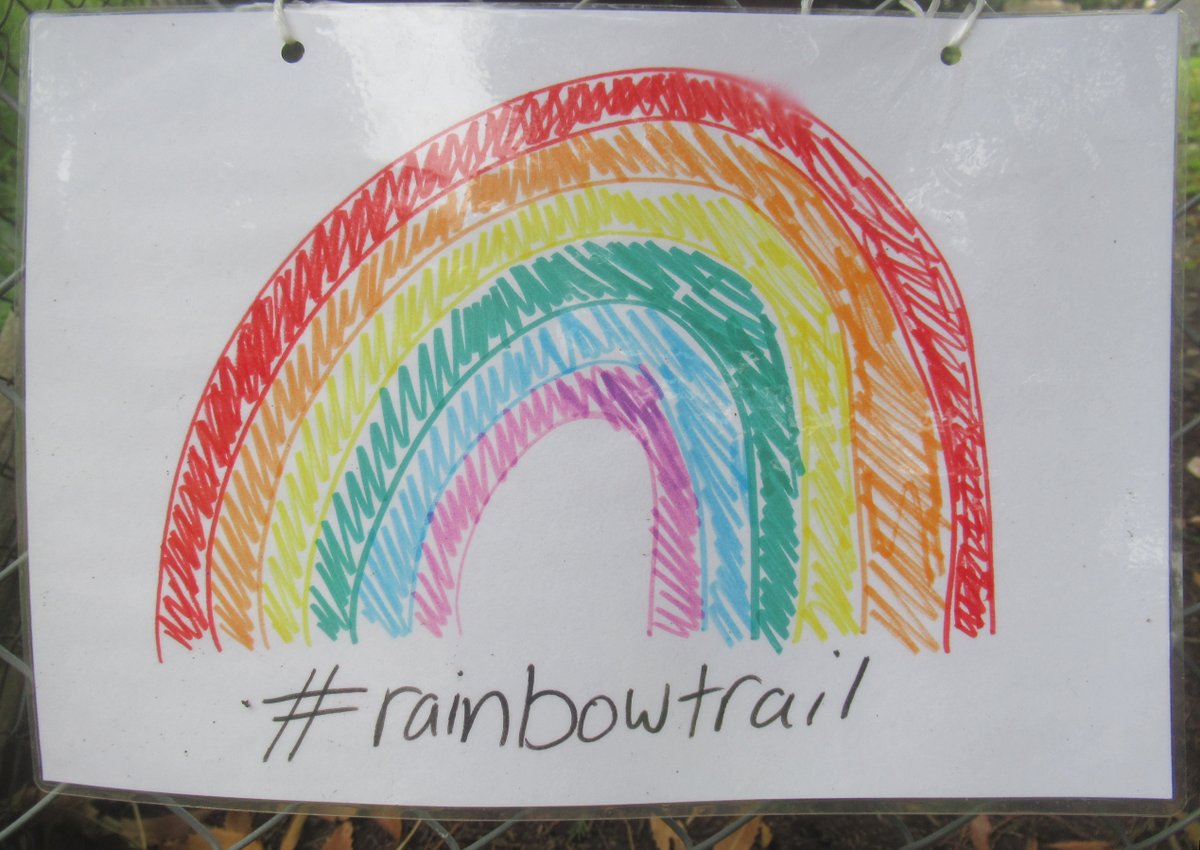
I haven’t seen many since, but apparently it is an Australia-wide movement in response to Covid-19, and is intended to “spread some joy during these testing times”. I’ve seen pictures of similar things in other countries too.
The real mythological rainbow?
I don’t remember learning anything about the Dreamtime in school (though possibly I blocked it out because it wasn’t the Bible’s creation story and thus was Not True).
However, while it varies between language groups and locations, many Aboriginal tribes have the concept of the Rainbow Snake as a creator, sometimes linked with the rainbow, sometimes not. This, I’ll just note, predates the Genesis record by a long way.
In popular culture, the rainbow is perhaps more commonly associated with the Norse Bifrost Bridge and the Irish pot of gold at the end of the rainbow (which may just turn out to be leprechaun gold).
Rainbows are striking and beautiful, and it’s not surprising that many cultures have given them meanings. Genesis doesn’t have a monopoly on the rainbow.
The Pride flag
However, I doubt conservative Christians feel too threatened by me admiring the rainbow’s beauty or understanding the science behind rainbows. They might be slightly bothered by other mythology using the rainbow, but there’s one thing they are particularly upset about: The LGBT pride rainbow flag.
In the group I was in, homosexuality was widely regarded as one of the worst possible sins. Back then, I don’t remember transgender people ever being mentioned, but they do now seem to be more widely spoken about, criticised, and feared.
I also don’t remember noticing the rainbow flag until a few years ago. I don’t know whether that’s because it has become increasingly common and visible, or just because previously I was in an ideological bubble and saw the flag without understanding its meaning.
It seems it dates back to 1978, as well as having links to earlier colourful flags. It’s also suggested it might have been partially inspired by Judy Garland’s role as a gay icon and her song Somewhere Over the Rainbow from The Wizard of Oz:
Anyway, the flag is colourful, it’s positive, it stands for acceptance, and as a result some Christians consider it a threat.
Cultural appropriation?
What really triggered this post was a friend showing me this tweet:
Worst example of cultural appropriation ever: LGBTs stole the rainbow from God. It's his. He invented it. Gen. 9:11-17. Give it back.
— Bryan Fischer (@BryanJFischer) April 2, 2017
I don’t think Bryan Fischer understands what cultural appropriation is (other than “something the evil liberals believe is a bad thing”). The pride flag hasn’t appropriated his Genesis flood rainbow, because it doesn’t seem to have any connection to the flood narrative.
However, I think he’s failed to recognise his story is actually cultural appropriation twice over:
-
Jewish scriptures: As I’ve argued at length, I think Christianity is an attempted hostile takeover of Judaism. Genesis is part of the Jewish Torah, which Christians have appropriated and then significantly re-interpreted.
-
Mesopotamian mythology: The story of Noah in Genesis draws heavily on Mesopotamian flood mythology.
If the Bible’s story of the flood is not an original tale and wasn’t intended to be part of the Christian tradition, Christian attempts to reclaim the rainbow are on shaky ground.
A trip to the British Museum
When I was first in London in 2013 and visiting the British Museum, I made a point of seeing the flood tablets. I don’t know what I was thinking: I definitely had doubts, but I don’t think I was ready to reject the Genesis record quite yet. Maybe part of it was feeling rebellious after a fellow believer told me I needed to focus on the items in the British Museum that proved the Bible (items like the Cyrus Tablet). And part of it was that I had a fascination with clay tablets and cuneiform because of how different they were from our record keeping.
But I don’t think I knew that much about them. For example, I came to a tablet from the Epic of Atrahasis talking about the flood:
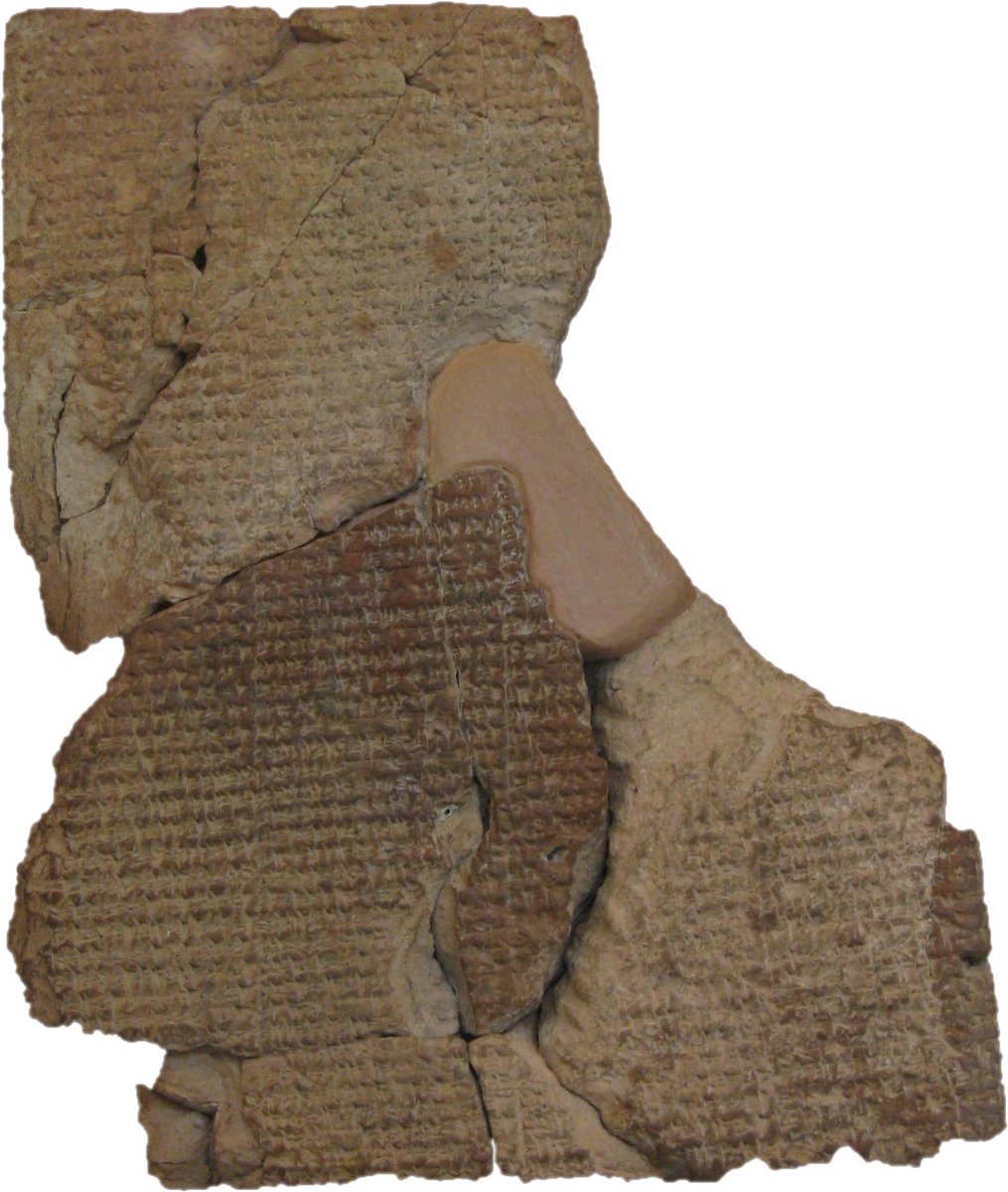
I thought it was Gilgamesh? But no, that was a separate, though related, version of the story:
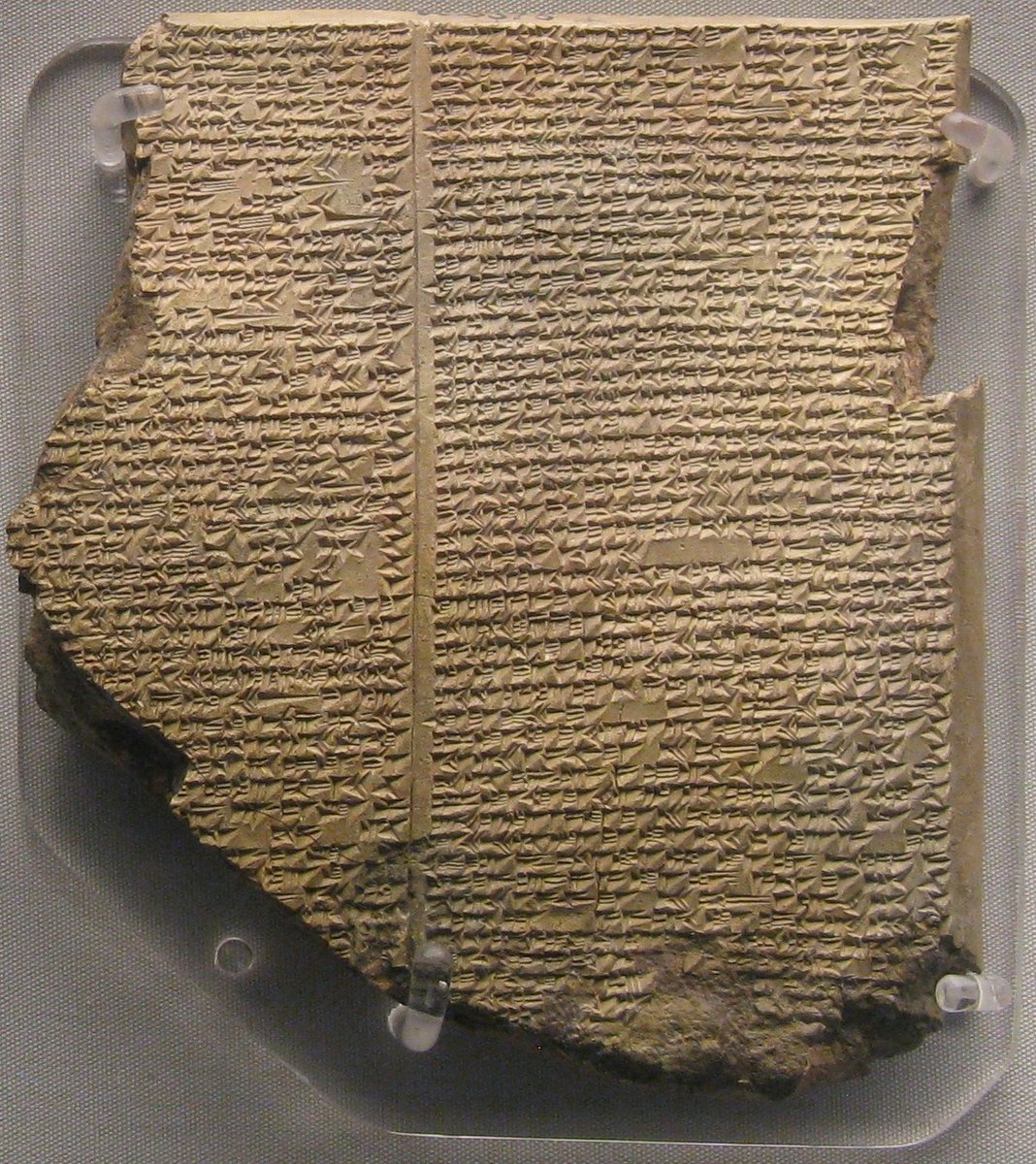
Gilgamesh, a flood, and a necklace
Here’s Wikipedia’s summary of the Gilgamesh flood story:
Later in the epic, Utnapishtim tells Gilgamesh the story of the Great Flood, which was sent by the god Enlil to annihilate all life on earth because the humans, who were vastly overpopulated, made too much noise and prevented him from sleeping. Utnapishtim tells how, when the flood came, Ishtar wept and mourned over the destruction of humanity, alongside the Anunnaki. Later, after the flood subsides, Utnapishtim makes an offering to the gods. Ishtar appears to Utnapishtim wearing a lapis lazuli necklace with beads shaped like flies and tells him that Enlil never discussed the flood with any of the other gods. She swears him that she will never allow Enlil to cause another flood and declares her lapis lazuli necklace a sign of her oath. Ishtar invites all the gods except for Enlil to gather around the offering and enjoy.
This is a story that we know is older than the Genesis record, and it has a lot of similarity to the Noah story. Note in particular that it has an oath that there will never be another flood, though the sign is a lapis lazuli necklace rather than a rainbow, and there are many gods rather than one.
It has been suggested that the changes between the previous flood stories and the Noah story were never intended to be taken as history, but to make a theological point. Where the gods in previous stories seem petty (sending the flood because humans were too noisy and stopped them sleeping), God is dispensing divine justice and removing wicked people.
The justice of God
However, even a demon can see the problem with this approach:
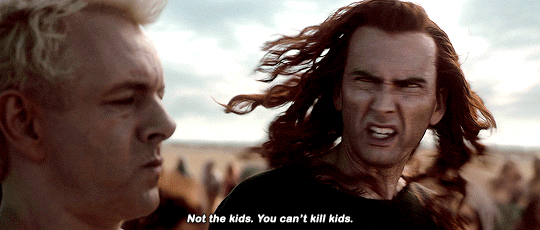
I have no reason to trust God’s standards of good and evil, and I very much doubt there was ever a time when every single adult here on Earth was evil. However, this flood wasn’t just targeted at adults: It was going to affect the child born yesterday, as well as the many unborn that Christian “pro-lifers” wring their hands about today. And all the animals and birds for good measure.
Personally, I think the original stories were more coherent: One god went off and caused a flood for his own reasons without consulting the other gods. Then another god tells the surviving human that this was unacceptable, and they will stop it happening again.
Once you get rid of polytheism, God needs to play both those parts. He’s meant to be in the right wiping out humans, but for some reason he then promises he won’t let it happen again - even though that might be needed for his “justice”.
I’m sure we viewed the resulting rainbow as a sign of God’s great mercy, but it’s hardly merciful to say “I could kill all you miserable sinners any time I wanted to, but I’m going to very nicely choose not to do so”.
However, don’t worry: I’m sure an omnipotent god must have access to a wide variety of punishments, so he won’t need to repeat the same one twice. Maybe Noah didn’t recognise that, but I remember hearing it said “No, God will never send a flood to destroy humanity - next time it will be fire” (presumably based on 2 Peter 3). Has anyone ever thought of building an asbestos ark? Or will an everyday bunker be good enough?
Reclaiming the rainbow for humanity
Claiming the rainbow as an exclusively Christian symbol is a standard trick in the fundamentalist playbook. Something can have existed and had many people claim it long before Christianity came into being, but the instant Christians make a claim to it that’s suddenly the One True Meaning and it’s theirs forever.
However, they don’t have that right - any more than anyone else does. The rainbow is a consequence of the laws of physics. Humans round the world and through time have seen it and used it to represent many different things, and it should continue to be available to all humanity.
To me, a rainbow is a beautiful thing that can also represent diversity and acceptance. I’d prefer it not to be commemorating a story of unjustified mass slaughter, let alone for that to be its one true meaning.
So to me, the bottom line is this: Christians weren’t the first to use the rainbow, they won’t be the last to use it, and it represents parts of their history that they should be trying to live down rather than to celebrate.